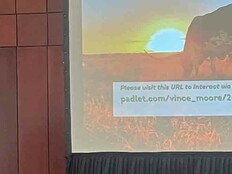Symantec's Altiris Client Management Suite Remotely Manages Classroom Technology
Schools find that lifecycle management software lets them do more with less.
The I.T. staff at the Jurupa Unified School District in Riverside, Calif., knew they had to find a better way to manage the district’s 4,500 computers.
With a small staff of five technicians, it was simply impossible for the IT staff to make personal visits to the district’s 16 elementary schools, three middle schools and three high schools and keep up with all the patches and software updates.
“We’re spread out over 44 square miles, and with the state’s budget situation the way it is, hiring additional IT workers was not possible,” says Thomas Tan, Jurupa’s director of information and education technology. “We needed a smarter way to manage the network,” he explains.
Jurupa’s answer was the Altiris Client Management Suite from Symantec, lifecycle management software that helps the district remotely manage PC and network assets, software distribution, and configuration and patch management.
Unauthorized changes account for roughly 60 percent of system downtime.
Source: Enterprise Management Associates
In the past, Tan says, it would take the IT staff 30 minutes to two hours to deploy a new PC image, which is a new version of an operating system with the appropriate configurations, drivers and applications. Now the staff can deploy new images in minutes.
“We could not re-image every computer manually on location,” adds Bob Ford, the district’s network manager. “It takes us 20 minutes to get to the most distant high school, so by managing the images remotely from a central location we save time and fuel costs,” he explains.
Tan says the ROI case for Altiris is very strong: Including two weeks of training and consulting, Altiris cost the district slightly less than $100,000 to deploy.
“A full-time tech would cost us $60,000 a year, so Altiris pays for itself in less than two years,” says Tan.
A Full View
Many school districts and organizations find that lifecycle management tools that let IT managers take a full view of the network are preferable to point solutions. Products such as Avocent’s LANDesk, Kace Networks’ KBOX, Novell’s ZENworks and Symantec’s Altiris are among the leading players. Prices vary based on the scope of a project, but most of the products cost in the five- to six-figure range for a 1,000-node deployment.
“We’ve gone from a silo-based view to a more holistic view of the network,” says Andi Mann, vice president, Enterprise Management Associates (EMA).
“As we develop new technologies, they tend to be integrated into the lifecycle management tools,” he says. “For example, we’re starting to see virtual applications management offered in many of the latest products.”
School districts struggling with tight budgets say deploying lifecycle management tools is the only way they can survive these challenging economic times. Here are some best practices they offer:
Deploy the tool as soon as possible.
Mike Roberts, technology director at Quinlan Independent School District in Quinlan, Texas, recommends not worrying about mastering all the features right away. Roberts, who deployed a KBOX appliance for his small six-school district, says IT managers are going to learn more about their networks than they ever imagined, so one approach is to just roll it out and use the training sessions to fill in the gaps.
“Very quickly, you’ll find out about license issues you didn’t know about and what’s actually running on each computer on the network,” Roberts says.
EMA’s Mann agrees that IT managers will derive immediate benefits from lifecycle management software. “For some, patch management may be the biggest problem to tackle first, while others may just start right off with inventory and asset control,” he says.
Conduct a thorough inventory of your software and licenses.
For those who are more comfortable with a formal plan, one of the best ways to start is to get control of your software licenses. It’s important to keep in mind that if an end user introduces pirated software onto the network, you could be held liable.
“Set up a baseline and run a variance report,” says EMA’s Mann. “Do it every week until you start seeing patterns as to what’s installed on your network.”
Karen Diggs, director of technology at North West Hendricks Schools in Lizton, Ind., says Novell’s ZENWorks 10 makes it very easy to get information on all the existing software licenses and the district’s hardware inventory.
“There are so many teachers using different software programs that it’s good to have ZENWorks keep track of all the software so we know what’s out there,” Diggs says.
Get your network backbone in order.
Especially for school districts that plan to use the software distribution feature, it’s important to have a robust network with the available bandwidth to handle remote trouble-shooting and software installs. Jurupa’s Ford says the district’s Altiris deployment was roughly in tandem with a gigabit network rollout.
“We now have 600 times more capacity than our existing T1 lines,” Ford says. “In a previous life, we would bring the Altiris servers to the site. Now we can do all the management from a centralized location and have LAN-quality speeds throughout the network,” he explains.
Minimize variations and lock down user desktops.
EMA’s Mann advises IT managers to stay away from multiple images. The fewer the images, the less complex the network is and the fewer procedures the IT staff will have to run and manage, he says.
Along with minimal images, it’s also important to lock down user machines. This means preventing users from installing new programs, using external hard drives and accessing the control panel.
“By preventing user activities, you minimize changes, and there’s less of a chance the network will experience an unauthorized change,” he explains.
Set up a test lab.
Quinlan’s Roberts warns that remote software distribution can become a nightmare if it’s not managed properly. He recommends setting up a test lab to run remote software installs.
“The last thing you want to do is blast an install through your management system of software that doesn’t work,” Roberts says.
Diggs of North West Hendricks Schools is adamant that the best approach is to set up a test environment, configure based on the school’s specifications, take a snapshot and then run the test.
“Once you roll out the software, you don’t want to uninstall and re-image the machines,” she says. “Even with the automated tools, it’s still time consuming.”
Lifecycle Checklist
Ask these questions to determine if lifecycle management software is right for your school district:
- Do you know what you are dealing with in terms of software licenses and devices?
- Are you paying too much for software licenses?
- Can you upgrade applications with minimal disruption?
- Are all your systems up to date with the latest security patches?
- Are your IT technicians still making desktop or classroom visits?
- Can you quickly bring a new piece of hardware online?








